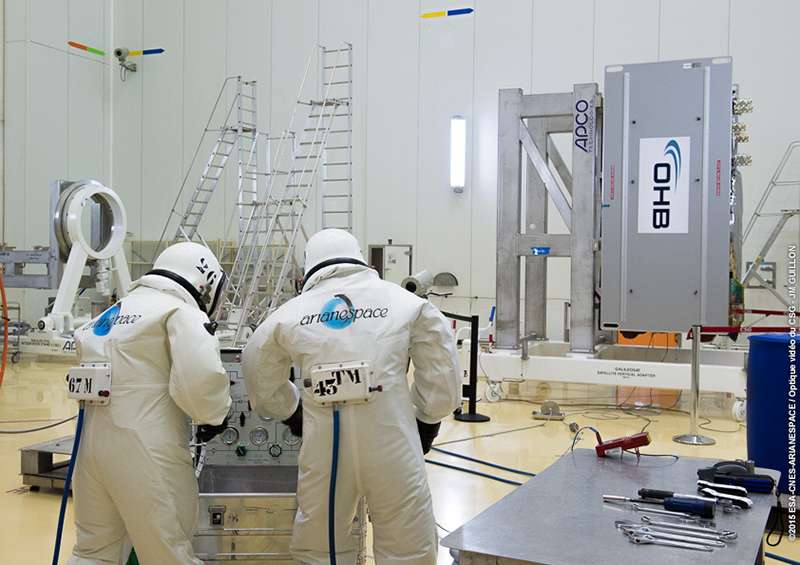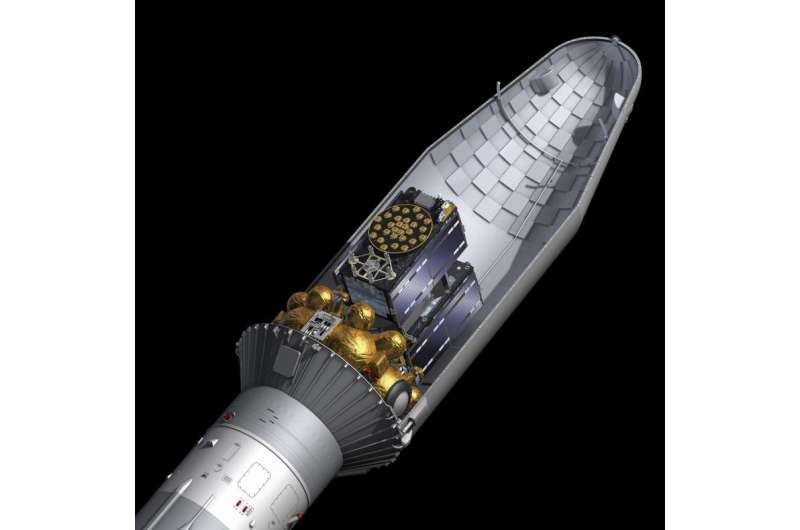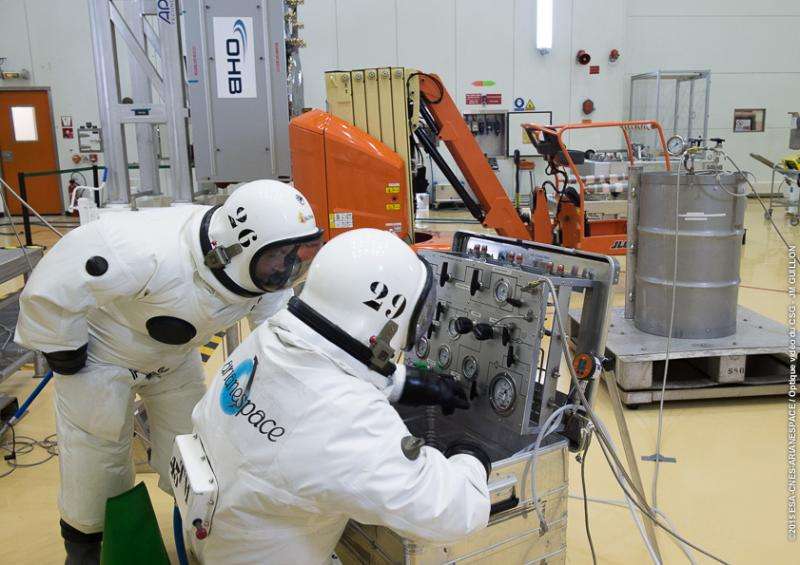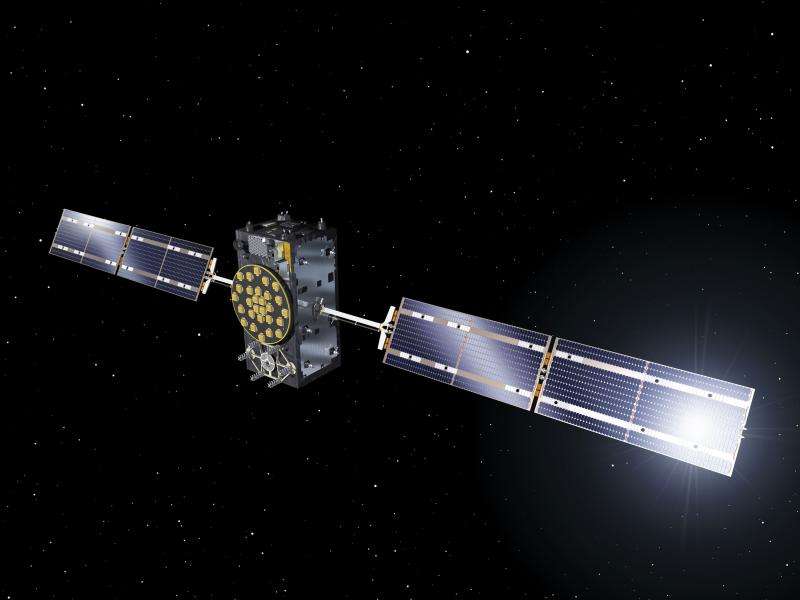Galileo satellites fuelled and ready for launcher attachment

Europe's latest Galileo satellites are fully fuelled, leaving them ready to be attached to their launcher upper stage in preparation for their 11 September launch.
Galileo 9 and 10 are due to launch atop a Soyuz launcher at 02:08 GMT on 11 September (04:08 CEST; 23:08 local time, 10 September) from Europe's Spaceport in French Guiana.
Technicians donned spacesuit-like SCAPE (Self Contained Atmospheric Protective Ensemble) suits to fill each satellite with sufficient hydrazine fuel for their planned 12 years of operations in space.
This fuel is needed for fine-tuning of their orbital paths following their launch, followed by routine orbital and attitude control over the course of their working lives.
Each Galileo satellite needs to keep its navigation antenna trained on Earth's disc at all times, employing dedicated infrared Earth and Sun sensors for this purpose.
This marked the first time Galileo had been fuelled within the Guiana Space Centre's 3SB preparation building. Previously the S5 fuelling building was dedicated to this purpose, but upgrades by Arianespace mean fuelling can now take place at the same location where they will subsequently be attached to their Fregat upper stage, streamlining the satellite preparation process.
Completion of fuelling means the two satellites are essentially ready for launch – what needs to be accomplished now is to first attach the Galileos to their launch dispenser, then to fix this in turn to their Fregat.
Fuelling Galileo satellites
The satellites plus Fregat will then be encapsulated within the launcher fairing, after which this 'upper composite' can then be attached to the other three stages of the Soyuz ST-B launcher.

The latest Galileo launch campaign commenced at the end of July, with the arrival of the satellites in French Guiana on 24 July.
A 'fit check' followed, to confirm the satellites as delivered in Kourou did indeed fit onto the dispenser that will first secure them in place during launch and then pyrotechnically eject them into their orbits once their target 23 222 km altitude medium-Earth orbit has been reached.
This was followed by in-depth system checks and final settings of onboard navigation and data handling software parameters.

Two further Galileo satellites are still scheduled for launch by end of this year. One of these satellites is completing testing at ESA's ESTEC technical centre in Noordwijk, the Netherlands, while the other one has already completed its testing and is awaiting transportation to Kourou in the second half of October.
In addition the first satellite of the following batch has arrived at ESTEC and is currently undergoing its thermal vacuum test. Another flight model will arrive at ESTEC by mid-September.

Provided by European Space Agency





















